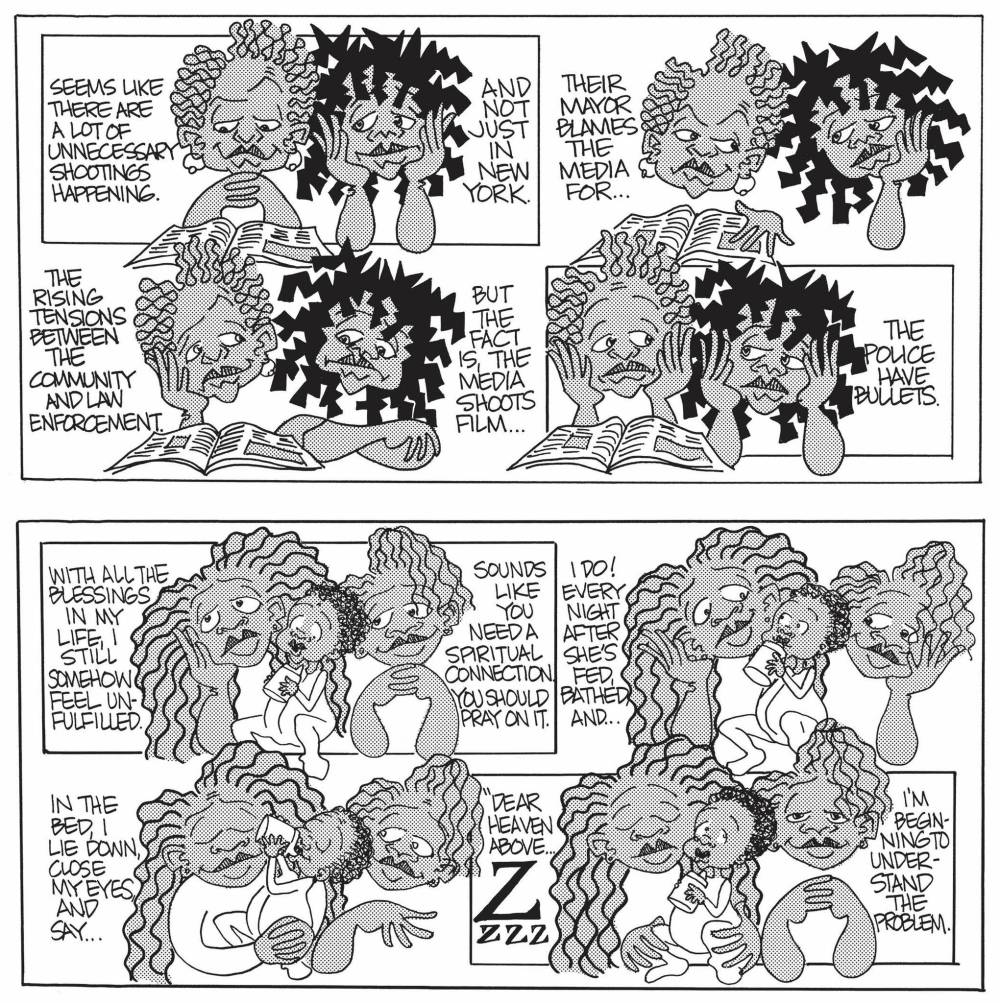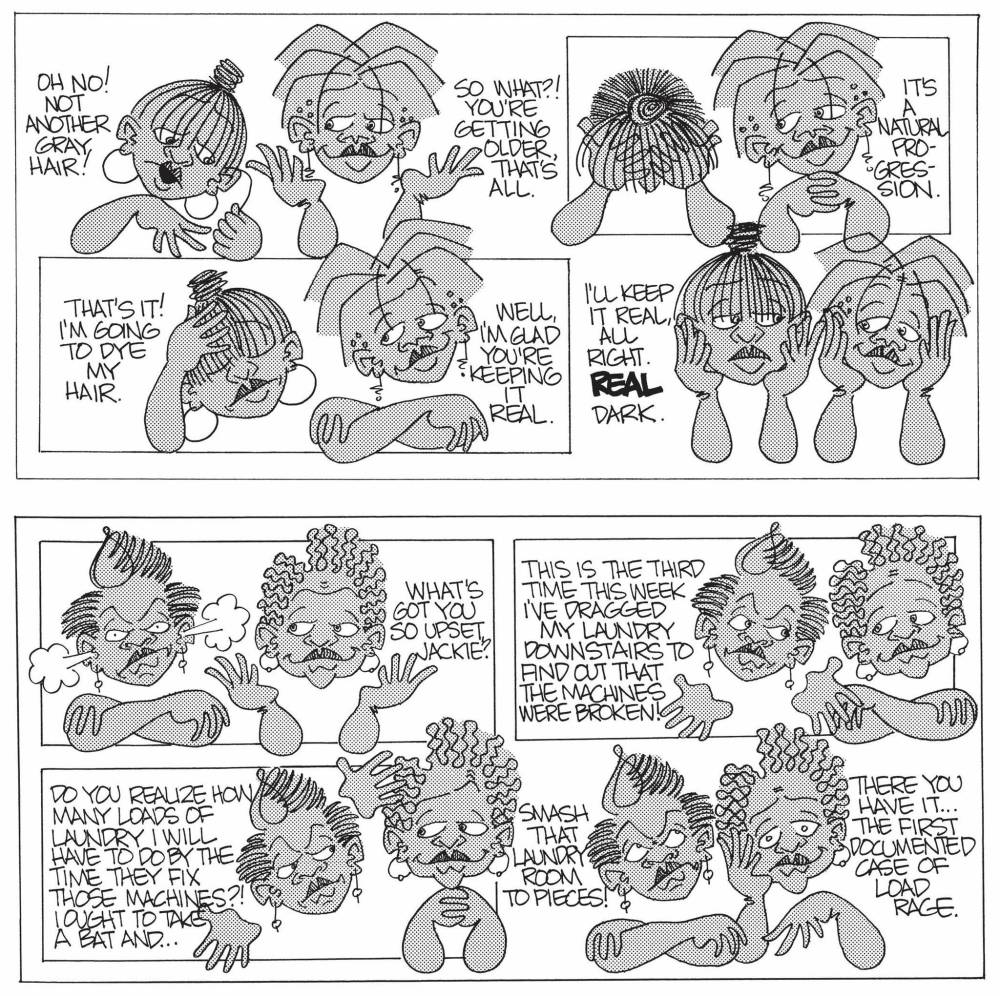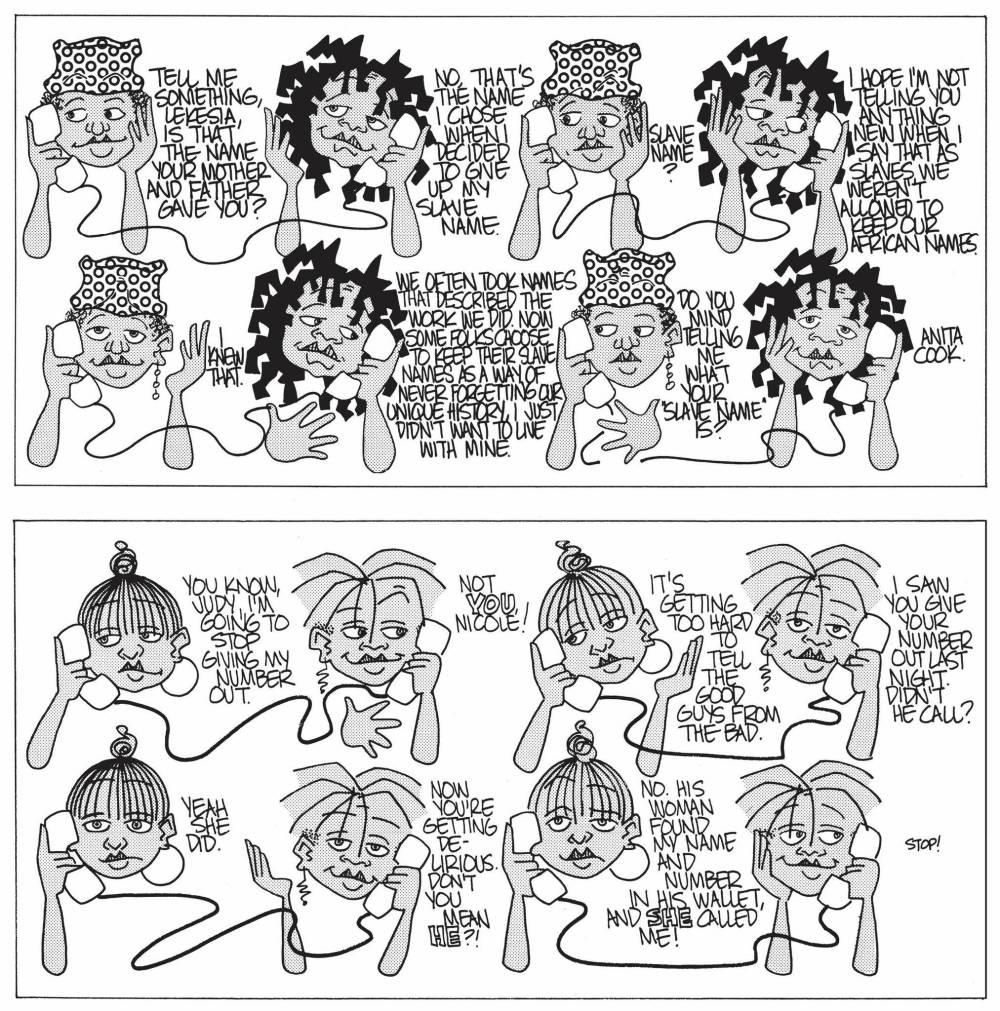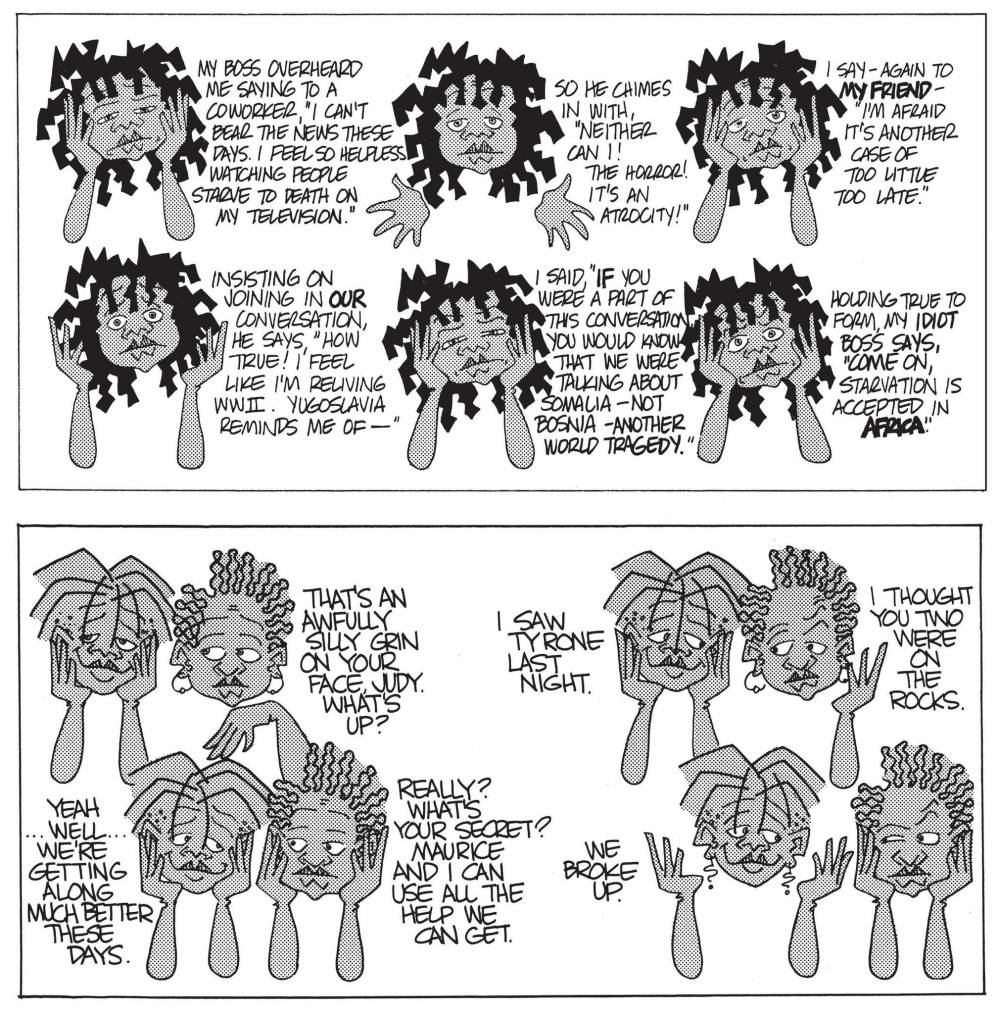Women talking
Black lives and voices in historic comic-strip anthology still resonate today
Advertisement
Read this article for free:
or
Already have an account? Log in here »
To continue reading, please subscribe:
Monthly Digital Subscription
$0 for the first 4 weeks*
- Enjoy unlimited reading on winnipegfreepress.com
- Read the E-Edition, our digital replica newspaper
- Access News Break, our award-winning app
- Play interactive puzzles
*No charge for 4 weeks then price increases to the regular rate of $19.00 plus GST every four weeks. Offer available to new and qualified returning subscribers only. Cancel any time.
Monthly Digital Subscription
$4.75/week*
- Enjoy unlimited reading on winnipegfreepress.com
- Read the E-Edition, our digital replica newspaper
- Access News Break, our award-winning app
- Play interactive puzzles
*Billed as $19 plus GST every four weeks. Cancel any time.
To continue reading, please subscribe:
Add Free Press access to your Brandon Sun subscription for only an additional
$1 for the first 4 weeks*
*Your next subscription payment will increase by $1.00 and you will be charged $16.99 plus GST for four weeks. After four weeks, your payment will increase to $23.99 plus GST every four weeks.
Read unlimited articles for free today:
or
Already have an account? Log in here »
Hey there, time traveller!
This article was published 25/03/2023 (952 days ago), so information in it may no longer be current.
‘Black History Month has passed, but March happens to be Women’s History Month,” candidly remarks Lekesia, one of the dynamic women characters in Where I’m Coming From, a retrospective by influential cartoonist Barbara Brandon-Croft.
Through Lekesia and her friends, Brandon-Croft’s comics engage the personal and the political, providing nine unique Black women’s perspectives to a wide range of readers. Where I’m Coming From first appeared in the Detroit Free Press from 1989 to 2005, and the slice-of-life strips compiled here provide a compelling portrait of Brandon-Croft’s groundbreaking talent. By 1991, she would become the first syndicated Black woman cartoonist in the United States, and her work remains just as fresh and eye-opening today as it was when first presented to audiences.
As a teen, Brandon-Croft apprenticed with her cartoonist father, Brumsic Brandon Jr. (also one of the first syndicated cartoonists to feature a Black lead in his own comic strip Luther.) After helping out her cartoonist father to earn an allowance, Brandon-Croft also studied illustration at Syracuse University School of Visual and Performing Arts. Despite this in-depth education in the medium, Croft did not envision cartooning as a career for herself, and the strips that would become Where I’m Coming From began as a request from Elan, a national Black women’s magazine seeking cartoons that might reflect their readership.
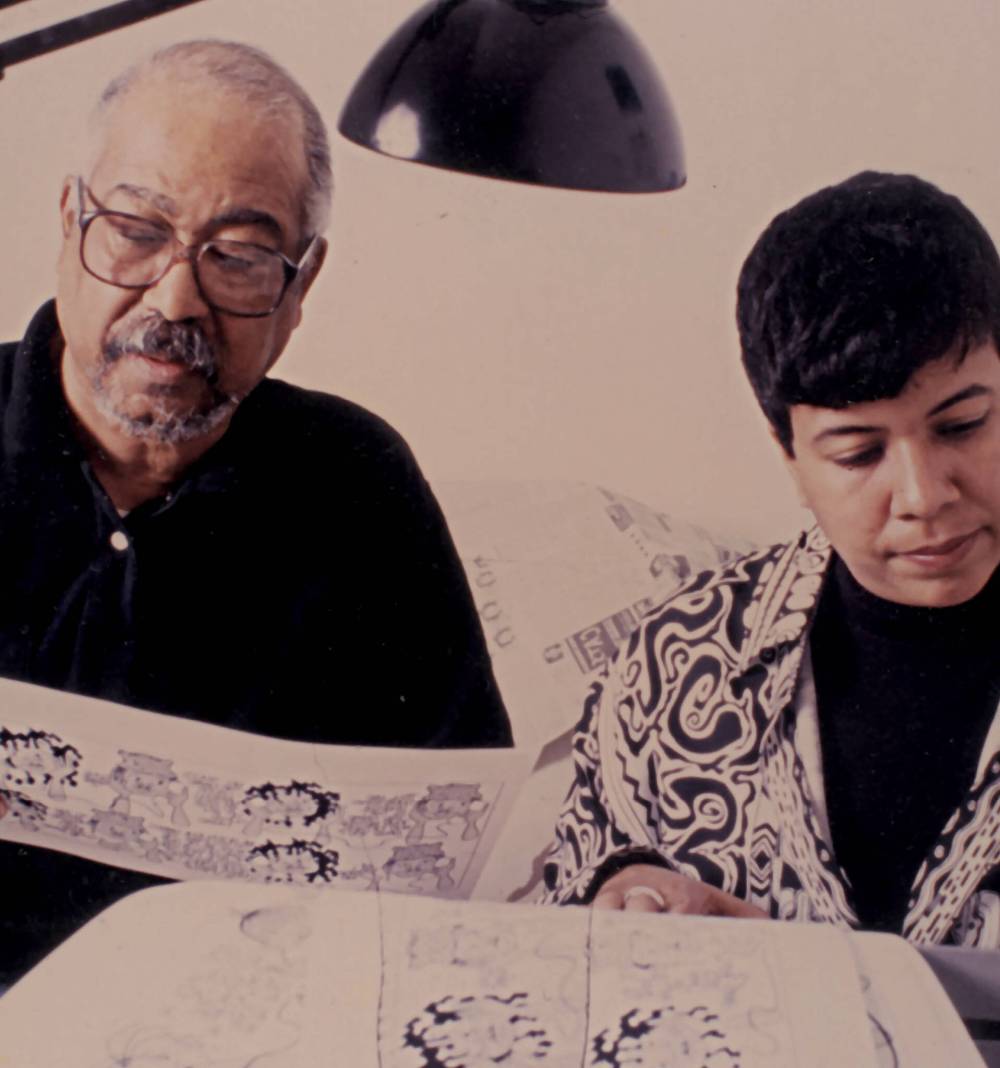
Supplied photo
Brandon-Croft apprenticed with her father (left), Luther cartoonist Brumsic Brandon Jr., in her teens.
Brandon-Croft’s wry humour and knack for portraying lively conversations on the page translated into nine talking heads of distinct Black women discussing race, gender, relationship woes and workplace frustrations through their everyday interactions.
The artist packs a lot of personality into this group of friends by way of diverse hairstyles (there’s a great strip about the effect of humidity levels on natural Black hair) and wonderfully expressive faces. Her nine characters speak directly to each other in different combinations, drawn within a straightforward, usually borderless layout of four to six panels per strip.
Though these conversations are intimate, Brandon-Croft treats the reader as an additional confidante too — the women’s faces are positioned straight towards the audience, frequently accompanied by a telephone cord to guide the reader’s eye towards an eventual, often surprising, punchline. In one instance, Brandon-Croft further engages the reader as mixed-race character Monica quips “I’m black and white and read all over! I just love being a comic strip character!”, breaking the fourth wall to acknowledge the many nuances and frustrations present in her lived experience as a racially ambiguous Black woman.
In another strip, glamorous Nicole dials each of her friends in sequence, hoping one of them will endorse her idea to reconnect with a dubious ex. In fact most, if not all, of Brandon-Croft’s characters give sound advice they themselves would refuse to take. This extremely relatable facet of many friend groups is used to great comedic effect; in current times, one could easily imagine these women on a wildly popular podcast, packed with wisecracking social commentary and hilarious stories about bad bosses and even worse dates, all of which are plentiful in this collection.
Conversations around men and relationships in particular are more nuanced and vulnerable than one might expect from women who are this direct with each other. The artist also addresses the topic of motherhood with thoughtful compassion alongside its comedic value. For example, Lydia’s journey into single motherhood is a personal choice. Although some of her (older, and notably childless) friends question her agency in deciding to raise a baby on her own, they ultimately support her.
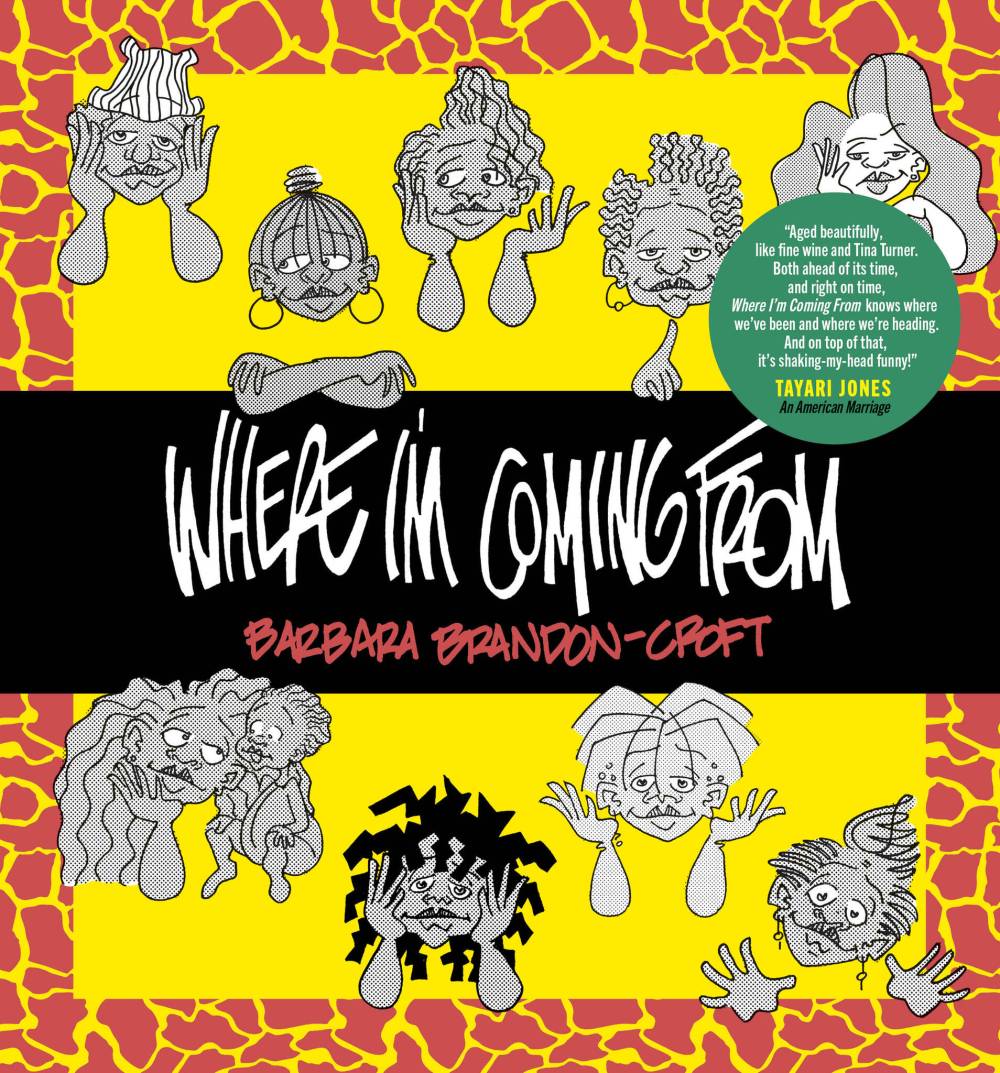
Where I’m Coming From
This notion of support between characters underpins this collection in a way that creates space for Brandon-Croft to showcase Black women’s physical expressions, voices and ways of being with such openness. More importantly, the artist’s incisive wit and timeless humour uncovers not just everyday struggles, but also authentic joy and community between Black women of all ages.
Nyala Ali writes about race and gender in contemporary narratives.






